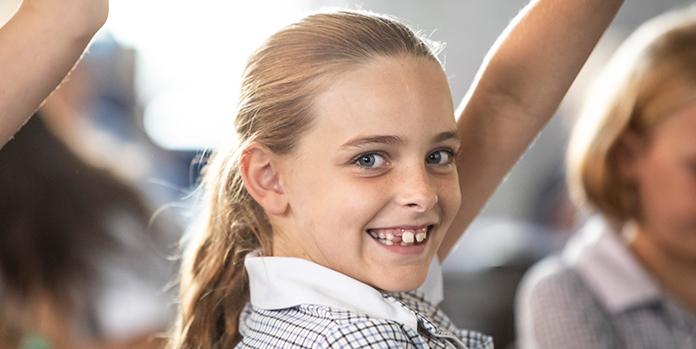At Melbourne Grammar, Upper Primary includes students in Years 3 to 6.
During these years, we continue to provide a personalised approach to learning while introducing opportunities to experience leadership, establish independence and foster confidence, integrity and respect.
Importantly, Upper Primary is also a time when students gain an awareness of gender differences, which presents new opportunities to build empathy and understanding.
Continuity is crucial during this period, as major changes in an educational environment can lead to a slowing down in academic progress.
Our Upper Primary curriculum
In Years 3 to 6, we focus on explicit teaching in English and Mathematics while further exploring the Humanities by studying History, Geography, Economics and Business, Civics, and Citizenship.
The following subjects are taught by specialist staff:
- Art
- Health and Physical Education
- Library studies
- Mandarin
- Music
- Religious and Values Education (RAVE)
- Science and Technology
These are also the years in which we introduce ‘design thinking’: a powerful model for problem solving that encourages empathy and optimism in finding solutions. As in Junior Primary, we continue to emphasise ‘visible thinking’ practices to ensure each child’s progress can be observed.
Learning changes in Upper Primary
In Upper Primary, children reach an age where they begin to develop their natural capacity for formal and abstract thinking. This allows us to introduce new concepts into our lessons, such as symbolism and metaphor in English, and more abstract mathematical ideas. Improved fine motor skills mean we can also introduce different instruments into our music lessons—all Upper Primary students will spend time learning a stringed instrument.
Across each discipline we maintain the emphasis on academic, emotional and social development established in Junior Primary, offering personalised learning programs and individual support for each student.
Independence, leadership and understanding
As they progress, Grimwade House students are given more opportunities to take on leadership activities including mentoring younger students and taking on responsibilities at the class and School level. These are also the years when students spend longer periods away from home through outdoor education and interstate excursions.
